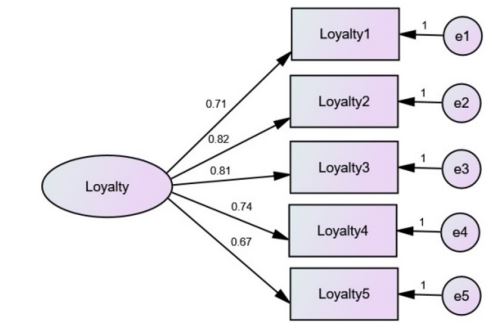The GAP Model of e-Government Service in Thailand e-Tourism
Main Article Content
Abstract
The objectives of this research were to develop service quality factors for Thailand’s e-Tourism provided by the government. This was done using Thai tourists as the samples who have used Thailand’s e-Tourism service to find out service quality using a total of 385 samples and determining the confidence level at 95 percent. The tool used for data collection was a service quality questionnaire for Thailand’s e-Tourism provided by the government. The confidence level for the whole research effort was 0.856 and the confidence level for each question was in the range 0.824-0.926. The statistics used in the data analysis included confidence test, frequency distribution, percentage, mean, standard deviation, coefficient of dispersion, skewness, kurtosis, exploratory factor analysis (EFA), and confirmatory factor analysis (CFA).
The results of the study showed that the exploratory factor analysis of the expectations and actual service received gave five factors (KMO = 0.789). Those indicators were not different from the theoretical models obtained from the confirmatory factor analysis. The five factors included 1) Tangibles, 2) Reliability, 3) Responsiveness, 4) Assurance, and 5) Empathy. The factors’ indicators are not different from the theoretical models. The researchers have modified the component of the second confirmatory factor analysis (S-CFA) model to check the construct validity of the scale after modifying the component and found Chi Square = 220.734, df = 165, P = 0.002, Chi Square/df = 1.338, GFI = 0.913, AGFI = 0.878, CFI = 0.980, (RMR) = 0.018, and RMSEA = 0.040. This indicates that expectation for service, and actual service received, which affect user satisfaction, can create users’ loyalty. This results in the analytical model for the service quality component for Thailand’s e-Tourism provided by the government matching the empirical data
Article Details

This work is licensed under a Creative Commons Attribution-NonCommercial-NoDerivatives 4.0 International License.
References
Travel & Tourism Economic Impact 2019 Thailand.
D. Buhalis and R. Law, “Progress in information technology and tourism management: 20 years on and 10 years after the Internet-The state of eTourism research,”Tourism management, vol.29, no. 4, pp. 609-623, 2008.
B. Aldebert, R. J. Dang, and C. Longhi, “In-novation in the tourism industry: The case ofTourism@,”Tourism management, vol. 32, no. 5, pp. 1204-1213, 2011.
F. Amato et al., “Big data meets digital cultural heritage: Design and implementation of scrabs, a smart context-aware browsing assistant for cultural environments,”Journal on Computing andCultural Heritage (JOCCH), vol. 10, no. 1, p. 6,2017.
K. Sorn-In, K. Tuamsuk, and W. Chaopanon, "Factors affecting the development of e-government using a citizen-centric approach," Journal of Science & Technology Policy Management, vol. 6, no. 3, pp. 206-222, 2015.
D. W. Martin, "An importance/performance analysis of service providers' perception of quality service in the hotel industry," Journal of Hospitality & Leisure Marketing, vol. 3, no. 1, pp. 5-17, 1995.
A. Parasuraman, V. A. Zeithaml, and L. L. Berry, "A conceptual model of service quality and its implications for future research," the Journal of Marketing, pp. 41-50, 1985.
J. Mattsson, "A service quality model based on an ideal value standard," International Journal of Service Industry Management, vol. 3, no. 3, pp. 18-33, 1992.
V. A. Zeithaml, A. Parasuraman, L. L. Berry, and L. L. Berry, Delivering quality service: Balancing customer perceptions and expectations. Simon and Schuster, 1990.
C. Grönroos, "A service quality model and its marketing implications," European Journal of marketing, vol. 18, no. 4, pp. 36-44, 1984.
A. Parasuraman, V. A. Zeithaml, and L. L. Berry, "Servqual: A multiple-item scale for measuring consumer perc," Journal of retailing, vol. 64, no. 1, p. 12, 1988.


